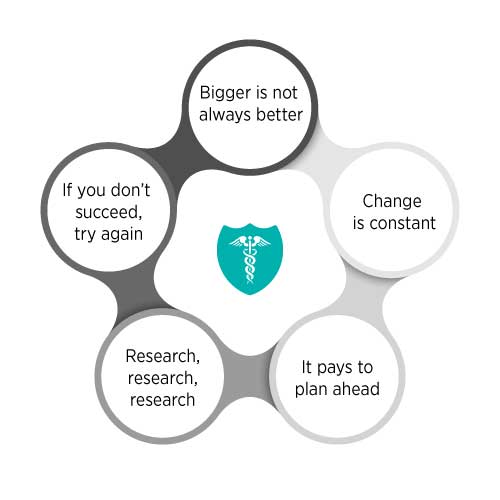
Five Ways the Affordable Care Act Changed How Consumers Shop for Healthcare
Filed Under: Best Practices, Market Research, B2B
Alex Palermo
Senior Vice President, B2B Research
Two years after the Affordable Care Act (ACA) was officially rolled out in 2014, healthcare is as different as ever. According to a recent article in the Wall Street Journal, consumers are not only changing how they approach health insurance, they are also changing the way they approach “shopping” for healthcare:
“As consumers get savvier about shopping for healthcare, some are finding a curious trend: More hospitals, imaging centers, outpatient surgery centers and pharmacy chains will give them deep discounts if they pay cash instead of using insurance.”

This is just one of the ways that the industry is changing.
Over the past several years, C+R Research has conducted numerous studies related to the Affordable Care Act. With these studies we have interviewed doctors, HR benefits administrators, insurance agents and brokers, individually insured consumers, and even some of the approximately 33 million Americans who are still uninsured. Through these studies, we have gained insight into this ever-changing industry and the effects on the population.
Yes, health insurance has been a hot topic over the past several years, and it is even more so now that our country is about to elect its next president. Without getting too political, here are five ways that the market is shifting and how it has impacted consumer behavior:
1. Bigger is not always better
Consumers are finding that the big brands they once knew as employee members of group health plans are not the same once they become individual plan members. With mergers looming for several of the countries’ biggest health insurers, consumers are starting to seek out local or regional carriers who provide more of a personal touch. Some are even going as far as to seek ACA-compliant alternatives to health insurance, such as Christian-based cost-sharing organizations where members send premium payments to other members in need of medical care.
2. The only thing that is constant is change
Gone are the days of unspoken loyalty to doctors or insurance companies. Before the ACA, consumers could see the same doctor for decades without worrying about changes in networks affecting their ability to seek treatment from that doctor. Now, consumers have come to expect annual changes in their networks, deductibles, premiums, and out-of-pocket costs that will continue to affect how they seek care.
3. It pays to plan ahead
When possible, consumers are planning ahead before they seek healthcare. This means that they are making phone calls to providers’ offices prior to making appointments to ensure their plan is accepted, as well as planning to seek additional services during years when they know their deductibles will be met.

4. Research, research, research
Before the ACA, consumers who were individually insured may have simply trusted a broker to provide a recommendation. Now, consumers are doing hours of research online where they are comparing different plan options according to their networks, deductibles, prescription drug coverage, etc. Not only are they researching online, they are also making follow-up phone calls to the providers’ offices and pharmacies to make sure the information that is online is up-to-date.
5. If at first you don’t succeed, try again
Unfortunately, in this day and age, consumers are finding that they need to be their own best advocates to avoid paying marked-up prices from providers. This means they are spending hours on the phone with the customer service department at insurance companies and billing departments at the providers’ offices to rectify mistakes or overcharges. If mistakes cannot be corrected, or if out-of-pocket costs end up being higher than anticipated, consumers have no problem switching carriers from one year to the next.
One thing is certain – we can expect more change in the health care industry as consumers become even savvier about shopping and saving on healthcare costs.
explore featured
Case studies

